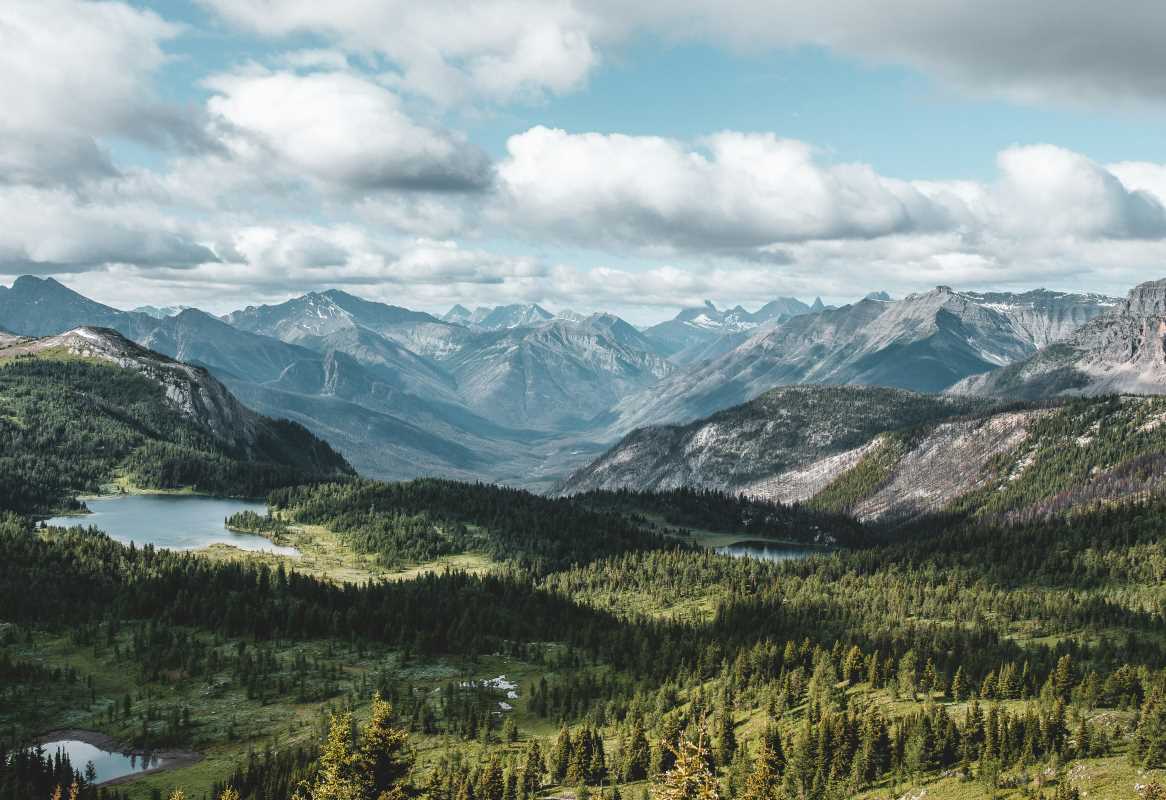The Rocky Mountains, or simply “the Rockies,” are one of North America’s most magnificent natural wonders. Stretching over 3,000 miles from British Columbia in Canada to New Mexico in the United States, this mountain range offers unparalleled beauty, diverse ecosystems, and endless opportunities for exploration. Known for its towering peaks, breathtaking vistas, and abundant wildlife, the Rockies attract millions of adventurers, nature lovers, and photographers every year.
Whether you’re seeking thrilling outdoor activities or a peaceful retreat in nature, the Rocky Mountains provide the perfect backdrop. This guide will take you through the geography, history, and significance of the Rockies, highlight must-visit destinations, and provide essential tips for planning your trip.
The Geography of the Rocky Mountains
The Rocky Mountains are a vast system of mountain ranges that traverse the western part of North America. Notable sections include the Canadian Rockies (in Alberta and British Columbia) and the southern ranges in Colorado, Wyoming, Montana, and New Mexico. These mountains were formed around 70 to 80 million years ago during the Laramide orogeny, a massive geological event that shaped the landscape we see today.
Key Features:
- Highest Peak: Mount Elbert in Colorado, standing at 14,440 feet, is the tallest in the range.
- Ecoregions: The Rockies boast diverse ecosystems, including alpine tundra, coniferous forests, and grasslands.
- Rivers: Major rivers like the Colorado, Columbia, and Missouri rivers have their headwaters in the Rockies.
This mixture of geological grandeur and ecological diversity makes the Rockies a hotspot for both scientific study and recreational activities.
The History and Significance of the Rockies
The Rockies have long been a vital part of North America’s history. Native American tribes, including the Blackfoot, Shoshone, and Ute, lived in and around the mountains for thousands of years, drawing sustenance from their rich natural resources. These tribes regarded the mountains as sacred and central to their cultural and spiritual lives.
European explorers began traversing the Rockies in the 18th century, with notable figures like Alexander Mackenzie, Lewis and Clark, and Zebulon Pike paving the way for westward exploration. By the 19th century, the Rockies became central to the expansion of railroads, mining operations, and settlement in the western United States and Canada.
Today, the Rockies represent not just a geographical marvel but also a cultural and economic hub. The region’s national parks and ski resorts contribute significantly to tourism, drawing visitors from all corners of the globe.
Must-Visit Destinations in the Rockies
The Rockies span a wide geographic area, offering something for everyone. Here are three iconic destinations that showcase the range’s beauty and diversity.
1. Banff National Park (Canada)
Located in Alberta, Banff is Canada’s first national park and arguably one of the most picturesque areas in the Rockies.
- Highlights: Lake Louise, with its turquoise waters, and the Icefields Parkway, a scenic drive connecting Banff to Jasper National Park.
- Activities: Hiking, canoeing, skiing, and wildlife spotting, including grizzly bears and mountain goats.
- Insider Tip: Visit in late spring or early fall for smaller crowds and stunning landscapes.
2. Yellowstone National Park (United States)
Straddling Wyoming, Montana, and Idaho, Yellowstone is famous for its geothermal features and diverse wildlife.
- Highlights: The Old Faithful geyser, Grand Prismatic Spring, and vast herds of bison.
- Activities: Hiking, camping, and wildlife photography.
- Insider Tip: Arrive early in the morning to see the most active wildlife and avoid afternoon crowds at popular sites.
3. Rocky Mountain National Park (United States)
Situated in Colorado, this park is a jewel of the southern Rockies.
- Highlights: The Trail Ridge Road, which takes you to over 12,000 feet in elevation, and Bear Lake, perfect for tranquil hikes.
- Activities: Snowshoeing in winter, wildflower walks in summer, and horseback riding year-round.
- Insider Tip: Reserve a timed entry pass in advance during peak seasons to secure access to the park.
Activities to Experience in the Rockies
The Rockies are an outdoor enthusiast’s dream come true. Whether you seek adrenaline-pumping adventures or peaceful moments in nature, this mountain range delivers. Here are some of the top activities to try:
1. Hiking and Backpacking
- With thousands of trails, the Rockies cater to all skill levels, from leisurely walks to challenging treks.
- Notable Hikes:
- The Plain of Six Glaciers Trail (Banff) for stunning glacier views.
- Emerald Lake Trail (Colorado) for alpine lakes and serene landscapes.
2. Skiing and Snowboarding
- Winter transforms the Rockies into a paradise for snow sports enthusiasts.
- Top Ski Resorts:
- Whistler Blackcomb (Canada), known for its impeccable terrain and après-ski scene.
- Aspen Snowmass (Colorado) for world-class skiing and luxury amenities.
3. Wildlife Watching
- The Rockies are home to an incredible array of animals, from moose and elk to bald eagles and black bears.
- Best Tips:
- Bring binoculars and maintain a safe distance from all wildlife to ensure both your safety and the well-being of the animals.
4. Hot Springs and Relaxation
- After a long day of exploring, nothing beats soaking in natural hot springs. Try the Banff Upper Hot Springs in Canada or Strawberry Park Hot Springs in Colorado.
5. Photography
- The Rockies offer endless opportunities for stunning photos of dramatic peaks, tranquil lakes, and colorful wildflowers. Sunrise and sunset are especially magical times for capturing unforgettable images.
Planning Your Trip to the Rockies
A trip to the Rockies requires careful planning to ensure a smooth and enjoyable experience. Here are some practical tips:
1. Choose the Right Season
- Summer: Ideal for hiking, camping, and wildlife watching, with mild temperatures and mostly clear skies.
- Winter: Perfect for skiing, snowboarding, and cozy evenings by the fire in a mountain lodge.
2. Pack Properly
- Bring comfortable, weather-appropriate clothing, sturdy footwear, and gear like maps, water bottles, and sunscreen.
- If you’re visiting during winter, pack layers, gloves, and hats to handle the cold.
3. Book Accommodations Early
- Popular locations like Banff and Rocky Mountain National Park fill up fast during peak seasons. Plan ahead to secure your ideal accommodations, whether it’s a campsite, mountain lodge, or luxury resort.
4. Be Prepared for Altitude
- The high elevations in the Rockies can cause altitude sickness, particularly for those not acclimated. Stay hydrated, take breaks, and allow your body time to adjust.
5. Respect Nature
- Follow Leave No Trace principles to minimize your impact on the environment. Stay on designated trails, dispose of waste properly, and avoid feeding wildlife.
 (Image via
(Image via





